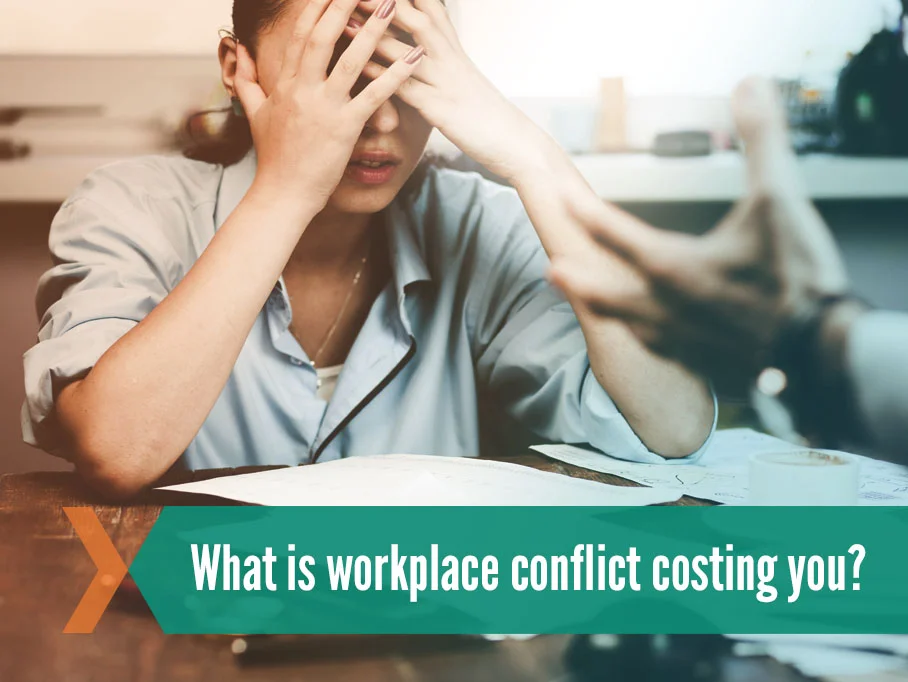
No one likes conflict or confrontation. Most people rather shy away and tolerate it rather than address it head on. Unfortunately, not addressing conflict comes at a great cost to our well-being, productivity, and company culture. Here’s how you can independently resolve conflicts in six easy, non-confrontational steps.
Conflict resolution is the process of ending a dispute and reaching an agreement that satisfies all parties involved. Since conflict is an essential part of being human, effective conflict resolution is not designed to avoid disagreements but to create a new and healthier relationship.
I define conflict as any workplace disagreement that disrupts the flow of work. The costs of organizational conflict include staff absenteeism, trust, employee disengagement, attrition and litigation expenses; while low morale, productivity losses and impaired decision making are among the many hidden costs.
Sometimes severe conflicts require the unnecessary restructuring of teams or business units rather than addressing the source.
According to a Myers-Briggs Assessment, U.S. employees spend three hours per week involved with conflict, which amounts to approximately $359 billion in paid hours (based on an average hourly earnings of $17.95), or the equivalent of 385 million working days.
Here are the Six Steps to Navigate and Resolve Conflict.
1. Initiate the Reboot Conversation
2. Set positive intent
3. Take ownership. Now you can do something about it, since someone has to take the initiative.
4 Apologize
5. Ask for help
6. Request a relationship reset.
Now that we’ve defined the steps, here’s the talk track to reset and move from confrontation and conflict to resolution and healthier relationships.
“What I want for you is to feel I’m a resource to help you succeed. I was reflecting on our last conversation and I owe you an apology. I know we don’t always see eye to eye. The last conversation didn’t go the way we wanted, so I want to apologize if I did anything that may have upset you or hurt our relationship. That’s why I could use your help. Let’s hit the reset button on our conversation so you can hit your goals and we can collaborate best. Are you open to discussing how we can design the healthy relationship that we both want?”
Once you have buy-in around this conversation, here are some questions to create healthy, collaborative relationships and better outcomes.
1. What’s your opinion around the source of our conflict?
2. What, if anything, have I done, or not done that impacts (impacted) the trust between us?
3. What can we do to rebuild the trust we need to avoid conflict and collaborate in a productive and healthy way?
4. How do you define ‘trust?’
5. How do you build trust in a relationship?
6. What are some things that can negatively impact our relationship?
7. How can we ensure we maintain a trusting relationship?
8. What would destroy the trust we’ve built?
While at least 25 percent of management’s time is spent on resolving workplace conflicts, handling and resolving conflict is a necessary skill that also breaks down departmental silos and enhances cross functional collaboration, as well.
By resolving conflicts, you can enhance your understanding of others. In addition, it builds trust and rapport, exposes yourself to diverse ideas, opinions, and experiences, reduces stress and distractions, improves decision-making skills, increases your emotional intelligence, empathy, and respect, and creates a positive and productive work environment.


